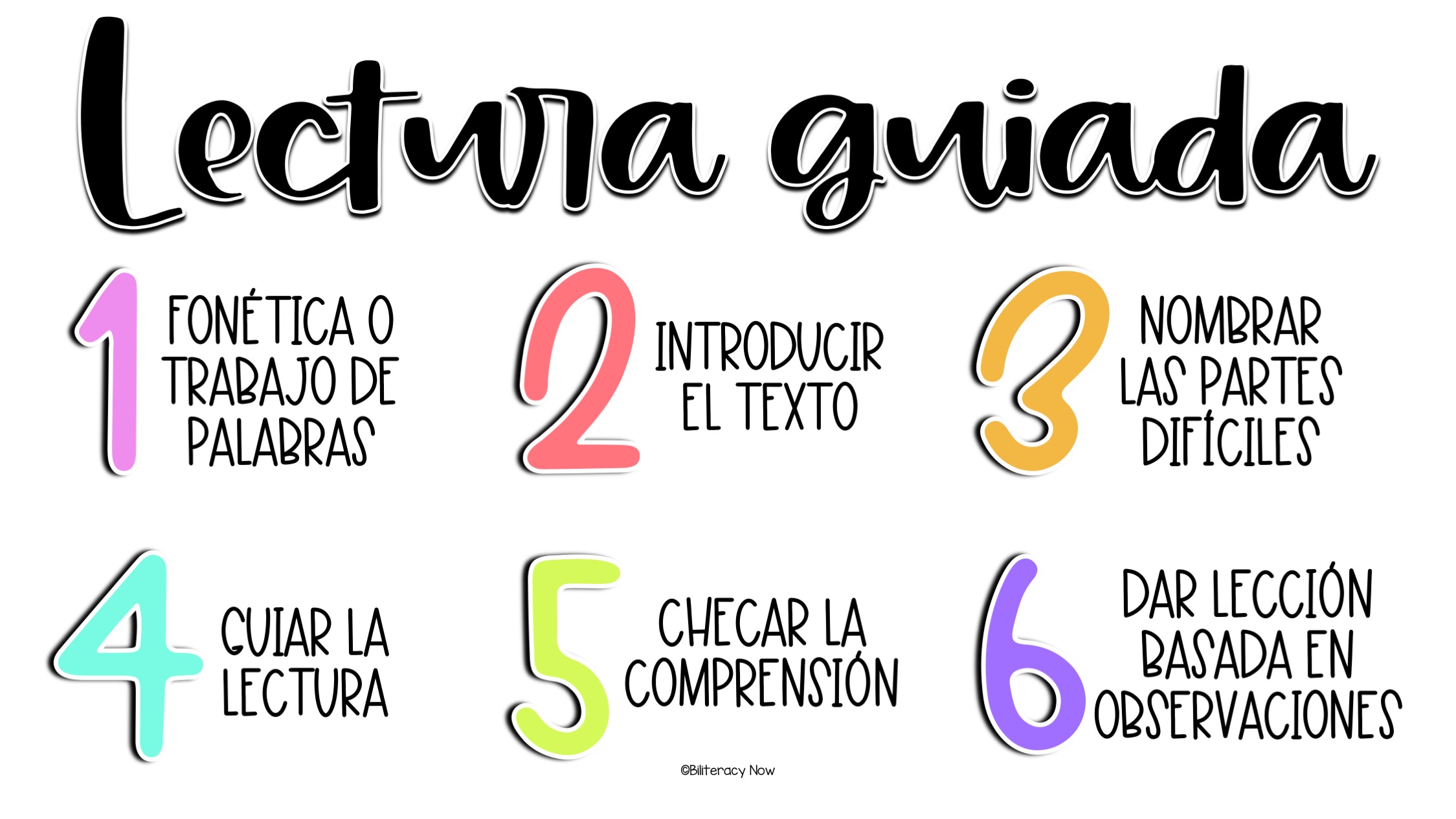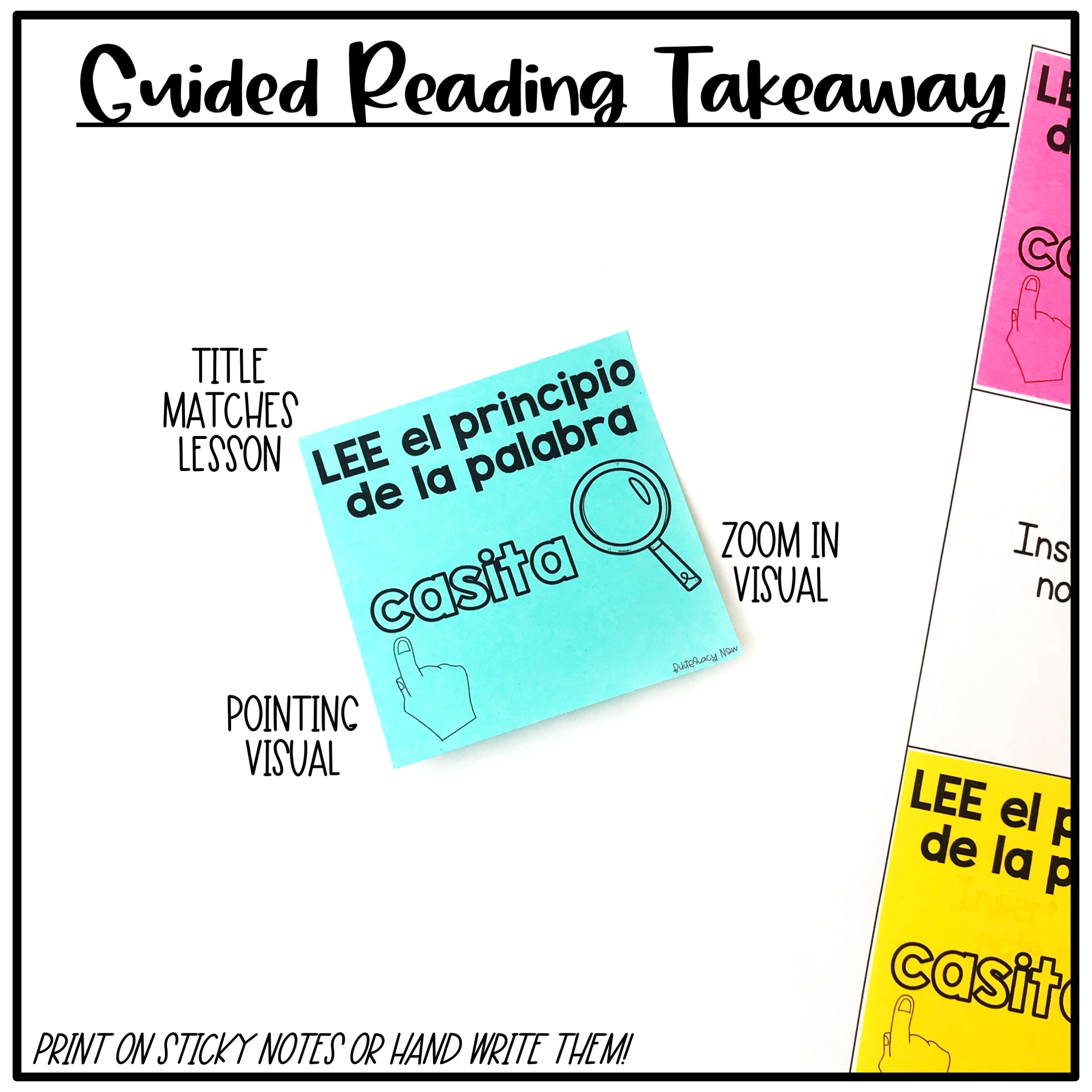I remember when guided reading first came out many, many years ago! Then suddenly people stopped talking about it. I’m extremely happy to see that it’s trending again because I’m a firm believer in it. Guided reading can mean many things to different people. For me, guided reading is a small group lesson that requires multiple copies of the same book. Students read the book in front of you, and afterwards you teach a strategy based on your observations. Guided reading reinforces comprehension and fluency. It’s also a great idea to start every lesson with a vocabulary or phonics warm-up. If you’re a visual learner, don’t worry, here’s an example for you:

GUIDED READING IN A BILINGUAL CLASSROOM
This question is probably one of my more popular ones. Does guided reading look the same in a bilingual classroom? Yes and no. The set-up, or steps, look basically identical. The main difference is the phonics work. In Spanish, it’s important to focus on how combining letter sounds make syllables and how combining syllables make words. For example, p-a, makes pa, and pa-pa makes papa. If your students are reading at levels that don’t require phonics practice, you could focus on introducing new vocabulary or even spelling patterns. The higher the reading level, the more the vocabulary warm-up begins to look like word study.
The main goal of any guided reading lesson is to get your students to read in front of you while you guide them through the pages of the book. Before they begin, do a quick book introduction. Then, name two parts of the book that might be tricky for your readers. For example:
- On page 6, you’ll see the word… This word means… Can you say it with me?/ En la página 6, está la palabra… Esta palabra significa… ¿La puedes decir conmigo?
The book should be one level above their current reading level. It will be challenging and guiding them will require time because you have to touch base with every student. Students will be expected to read the entire book on their own, but you’ll want to guide each student individually through at least one page. I would say a guided reading lesson should take anywhere from 12-15 minutes when working with 3-4 students. The role of the teacher is very important here. You must coach them and take notes on their reading patterns. This will help you identify what strategy you will be highlighting at the conclusion of your lesson.
When the students have finished reading the book, ask them comprehension questions. Below are some example on how you could start that conversation:
- Let’s talk about the characters, they were… / Vamos a hablar sobre los personajes, fueron…
- What was the problem in the story? / ¿Cuál fue el problema en la historia?
- What happened at the end? / ¿Qué pasó al final?
The purpose of these questions is not to dig deep (this isn’t a close reading lesson), but rather to get a general idea of your students’ comprehension level. Take notes during their verbal responses, as this will help you plan your groups in the future. Once it’s time to send them back, leave them with a strategy they can work on. For example, you noticed that your students were sometimes skipping word endings. This usually means they are trying to rush through the book and instead of reading the word walks/caminas, they read walk/camina (by omitting the s). Here’s one way you could start that quick lesson:
- Good readers know that the ending of words are super important. When you read on your own, always remember to read until the very end of each word. Like this…/ Los buenos lectores saben que el final de cada palabra es muy importante. Cuando estes leyendo a solas, recuerda de leer hasta el final de cada palabra. Observa como leo…
Once you’ve modeled by reading a sentence or two from the book, hand them a visual of what you just stated. Here’s an example of one on a sticky note (this one is focusing on the beginning of the word):
This visual is extremely powerful and serves many purposes. If you want to track their progress, tell them to write the date on it and glue it in their reading journal. Finally, tell them you want to see them referring back to this sticky note when they’re reading independently. And just like that, your lesson is done!
If you need help setting up your guided reading binder, check out my Lectura Guiada Binder Kit by clicking here. This binder kit is perfect for K-1 bilingual teachers who teach in Spanish. It includes reading passages, syllable work, flashcards, and more! Also, check out my free Guided Reading Mat here.
Have questions about this post? Please comment below. Happy teaching!